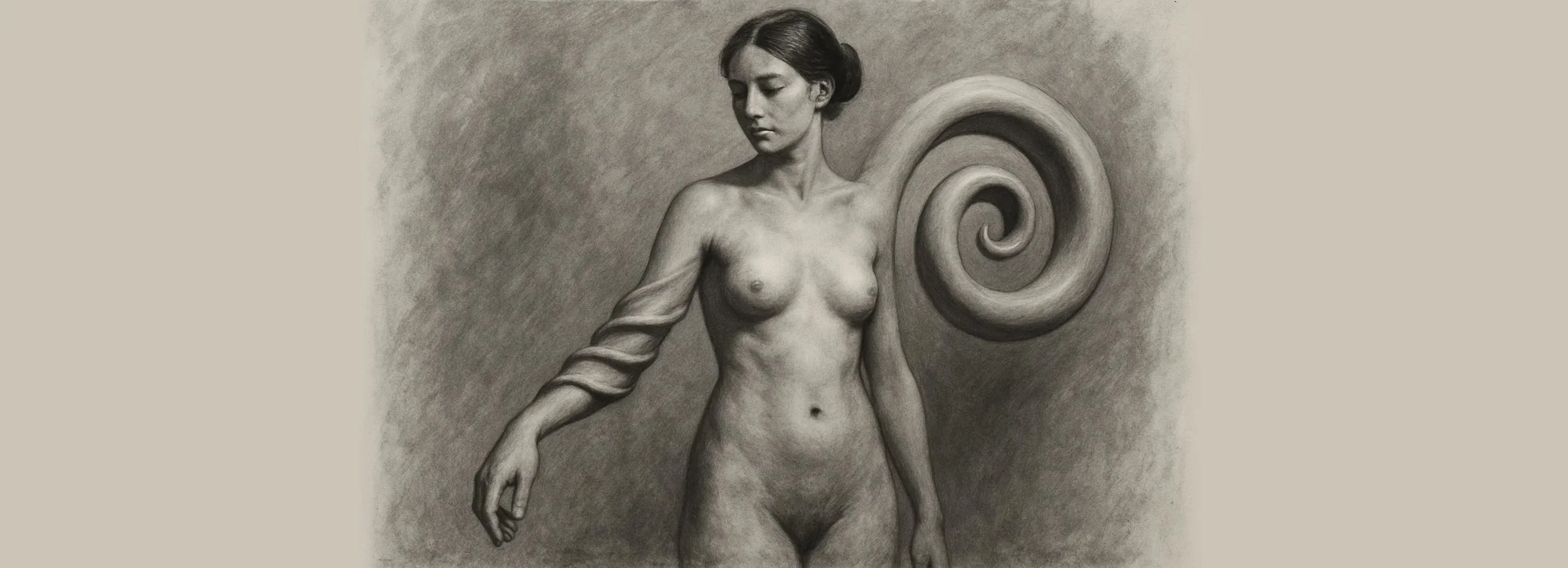Stability, Drift, and Collapse
Formalizing drift, collapse, and constraint basins as reproducible fields.
The Deformation Operator Playbook
This is a practical prompting framework for intentional, repeatable figure warps that treats distortion as the body itself, guided by the flow Anchors → Select → Transforms → Constraints → Viewfinder. It offers a small set of operators (extension, coils, parabolic arc, depth tug, sine modulation, logarithmic scaling, rotation, and viewfinder shifts) with locks to preserve thickness, topology, and continuity, so edits stay anatomical rather than turning into props or glitches. It’s engine-agnostic, expects iteration, and can be audited with light metrics while acknowledging that some platforms may suppress strong deformations over time. GitHub Protocol
Foreshortening Recipe Book
The Foreshortening Recipe Book is a structured prompting methodology designed to test and improve how AI image generators handle depth, perspective, and spatial reasoning. Instead of describing scenes all at once, it uses sequenced descriptions that build from nearest to farthest elements, forcing models to "reason through space" rather than assemble flat compositions. The system includes ready-to-use prompt "recipes" (reclining figures, hallways, objects) with built-in constraints like "gates" and "bans" to prevent common shortcuts. It functions both as a practical field guide for artists seeking better depth control and as a diagnostic tool for measuring where generative systems' understanding of 3D space breaks down.
Off-Center Fidelity: Conversational Protocol
Most models collapse to *safe center*. OCF reframes that as geography: there are reproducible *attractor basins* where off-center images remain coherent. By measuring Δx, rᵥ, ρᵣ and applying small, engine-aware nudges (plus a one-click crop), you can hit those basins reliably and explain *why* a result passed or failed. Upload this document to any conversational AI and start re-framing. GitHub Protocol.
Off-Center Fidelity: Constraint Basins for Stability and Drift in Generative Models
Generative models tend to collapse toward the statistical mean: subjects re-center, voids fill, and fracture smooths away, producing polished but predictable results. This constraint basin framework reframes this collapse as navigable geography by parameterizing images along centroid offset (Δx), void ratio (r_v), and rupture density (ρ_r), revealing reproducible attractor zones (“haunt corridors”) where images hold coherence while resisting collapse. These basins can be operationalized as modular “constraint capsules,” steering vectors that provide interpretable, repeatable control across multiple model families
Failure Taxonomy: Evidence for Generative Model Collapse Modes
This taxonomy provides a structured classification of common and edge-case failure modes in generative model outputs, analyzed through the Sketcher Lens and CLIP, and informed by real examples with visual evidence. It organizes these collapse patterns into clearly defined categories, making it easier to identify, analyze, and communicate where and how generative systems fail. The archive serves both as a diagnostic tool for practitioners and a reference for researchers, bridging qualitative observation with structured, repeatable classification. Its goal is to improve model evaluation, guide prompt refinement, and inform future system design by making failure behavior explicit and actionable.
Constraint Gravity: Thirty Figures Without Collapse
This study tests how stable an AI figure can be across thirty recursive generations. Without prompt inflation, the system holds orientation and weight, mimicking how artists learn through repetition and constraint. What emerges is not novelty, but refined pressure memory and a glimpse of machine restraint observed as memory.
μ Negotiation: How the Lens Finds Off-Center Fidelity in Generative Models
This is a working essay that reimagines generative drift, collapse, and off-center images not as errors but as fertile grounds for authorship. Using the Visual Thinking Lens framework, it introduces practice-based concepts like off-center fidelity, recursive refusal, and ghost density as coordinates for artists and operators working inside model drift. Axis scoring and paradox cues provide structural tools to resist closure bias, reframing generative work as negotiation rather than passive output. The essay positions this unstable edge between fidelity and fracture as the true site of originality.
Off-Center Fidelity: Operationalizing Drift as Creative Control (Full System Notes)
Off-Center Fidelity develops a framework for controlling drift in generative image systems by defining constraint basins: overlapping coordinates (centroid offset, void ratio, rupture density, mark commitment, etc.) that hold an image off-center without collapse. Within this space, 32 “capsules” (geometric anchors + mark/gesture drivers + temporal elements) serve as reproducible levers to displace outputs away from the statistical mean while maintaining coherence. The document argues that by steering engines into these max-volume intersections, artists and researchers can probe how models balance stability and drift, exposing both artistic structure and interpretability value.

